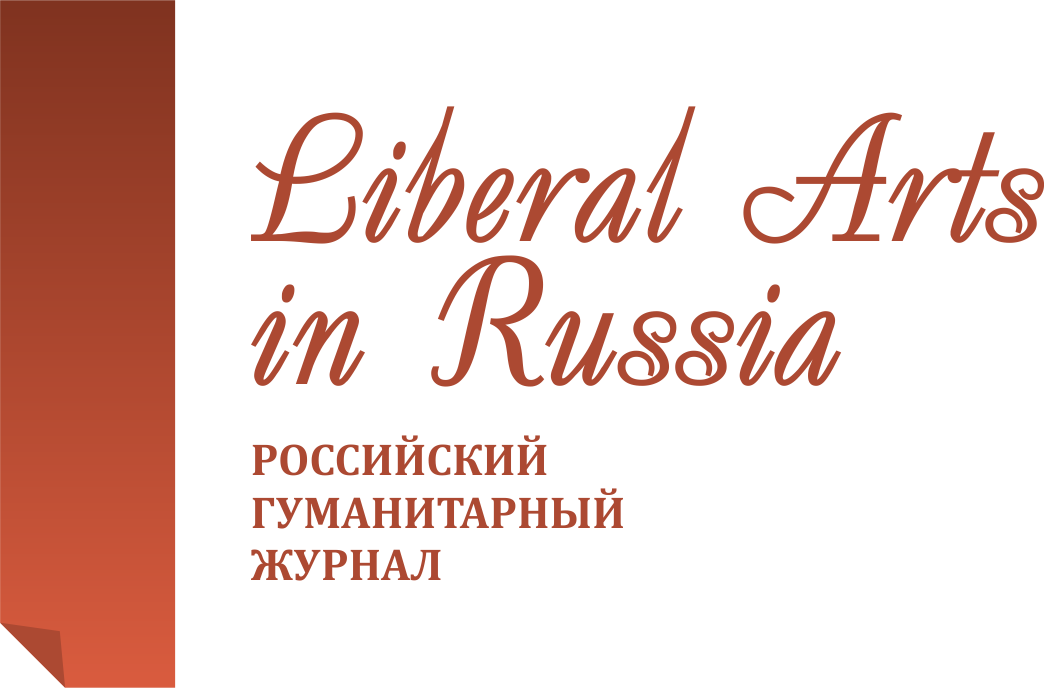“The English Renaissance of art”. From W. Pater to O. Wilde. Cultural-aesthetic aspect
Liberal Arts in Russia. 2017. Vol. 6. No. 5. Pp. 363-375.
Get the full text (Russian) Email: a.fedorov@libartrus.comAbstract
The author of the article considers some features and peculiarities of origin and development of aesthetic theory “English Renaissance” and estimates its place in English culture of the last third of the 19th century. First of all, attention is drawn to the contribution of D. Ruskin and W. Pater in the formation of a complex of ideas and attitudes that is known as aestheticism. The recognition of the primacy of beauty, the adoption of the special Mission of art and activeness and the principal value of the creative personality, which recognized the dominant aesthetic attitude to life. The author concludes that Ruskin and Pater have proved the possibility of general update of English culture. For its part, Wilde, a disciple and follower of Pater, considered beauty as a universal category, since it is the primary means of understandings the world. Wilde’s dialogue, “Critic as artist” is considered as an expression of his program to establish English Renaissance. Wilde was the most characteristic representative of aesthetic romantic individualism. In the article, his judgments on the cultural heritage and contemporary culture from the perspective of artistic individual being are emphasized. Wilde wanted to see the second half of the 19th century as a new stage in “the English Renaissance of art”. The Mission of art is to bring spirituality and beauty in real life. The dialogue gives the opportunity to highlight a number of components of the Wilde’s theory of romantic personality. In the article, the theory of the English Renaissance associated with social and cultural phenomenon such as the Victorian. A comparison of the Victorian and aestheticism allows saying that aestheticism was developed own romantic conception of the world and of human. This concept is not expressed through the motifs of escape from life on the model of byronism. The main point of view was a transition and a real stay in the sphere of culture or the aesthetic transformation of the environment for the ideal balance of human with some of newly created living surroundings. The individual antivictorian motives does not exhaust characteristics of the “English Renaissance”. The aim of art is to depict directly this universal harmony between world and human beings, the aspiration for portray the relationship of literature with images of world culture, with art forms and means of different types of art. As a result, English Renaissance became a cultural complex with elements of cultural mythology, caught in full opposition to the Victorian. English Renaissance was a peculiar type of culture. It was a cultural project on universal revival of art, life and human in their inextricable relationship. This project was based on the romantic cultural myth about a person living in the world of beauty. This new type of personality should connect individuality, unique inspirational spiritual life, and the universality of interests and knowledge of cultural heritage and the universal potential in artistic creation itself. Thanks to the English Renaissance culture and art, during the late reign of Queen Victoria has shown ability to demonstrate new capabilities of creative research and achievements in aesthetic theory and artistic practice.
Keywords
- • the English Renaissance of art
- • the Victorian
- • Mission of art
- • culture
- • art
- • spirituality
- • beauty
- • romantic cultural myth
- • spiritual culture
- • revival of art
- • cultural mythology aestheticism
References
- Pisateli Anglii o literature XIX-XX vv.: Sbornik statei [Writers of England about the 19th-20th centuries: Collection of articles]. Moscow, 1981.
- Morris W. The Collected Works of William Morris. London, 1915. Vol. 23.
- Anikin G. V. Estetika Dzhona Reskina i angliiskaya literatura XIX veka [The aesthetics of John Ruskin and the English literature of the 19th century]. Moscow, 1986.
- Obraztsova A. G. Sintez iskusstva i angliiskaya stsena na rubezhe XIX-XX vekov [The synthesis of art and the British scene at the turn of the 19th-20th centuries]. Moscow, 1984.
- Pater V. Renessans. Ocherki iskusstva i poezii [Renaissance. Essays on art and poetry]. Moscow, 1912.
- Pater W. Appreciations. London, 1924.
- Pater W. Plato and Platonism. New York, 1967.
- Hamilton W. The Aesthetic movement in England. London, 1882.
- Sedykh E. V. Uil'yam Morris: Lik Srednevekov'ya [William Morris: The face of the Middle Ages]. Saint Petersburg, 2007.
- Fedorov A. A. Estetizm i khudozhestvennye poiski v angliiskoi proze poslednei treti XIX veka [Aestheticism and artistic search in English prose of the last third of the 19th century]. Ufa, 1993.
- Wilde O. The Complete Letters of Oscar Wilde. London, 2000.
- Fitzsimons E. Entering The Woman's World: Oscar Wilde as Editor of a Woman's Magazine URL: victorianweb.org.
